Notion Ink Adam or why am I waiting for the New Year
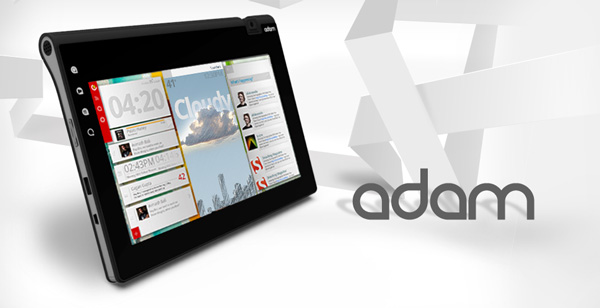
First of all, I must say that I have nothing to do with Notion Ink. This post is generated by the desire, first of all, to break the information vacuum on the habre, formed around the Adam tablet, which has been developed by Notion Ink over the past year. Among Habr's audience, as it turned out, there are quite a large number of people interested in purchasing a tablet, but trite not knowing about anything other than the iPad and not wanting to consider anything else as a candidate for the purchase. Well, of course, this post is a kind of response to this post and a desire to express its indignation to the aspects indicated there as the fundamental ones when choosing a tablet.
A little bit of history
For the first time, the prototype was shown at CES 2010, where the release date for the 2nd quarter of 2010 was announced. This was also a post on Habré. However, shortly thereafter, the company began to experience difficulties with investors. While the company had a prototype almost ready for production, investors decided to change the OS to Windows 7. After some time, plans changed again - this time the company's engineers were asked to develop a smartphone. However, the CEO of Rohan Shravan was ultimately able to find other investors willing to also cover the costs of breaking the contract with the current ones. The result of all these re-turbulence was, on the one hand, a six-month delay (the tablet should go on sale already this month, according to some rumors - within a week), and on the other - additional time for “licking” the product. How it turned out, we now see.
')
Specs
As is customary in such cases, I can not fail to give the specifications of this tablet.
- Dimensions: 191x269x14mm
- Weight: 700 grams
- Platform NVIDIA Tegra 2, Dual Cortex A-9, hardware acceleration of video, audio and 3D
- Android 2.2 with update to 2.3 soon
- 1Gb DDR2 667MHz
- 1Gb fast SLC flash memory
- 8 + Gb flash memory (depending on model)
- MicroSD connector
- 10.1 "1024x600 Pixel Qi matte multi-touch display
- 3.2MP AF PTZ Camera
- Communications: Wi-Fi b / g / n, BT 2.1 + EDR, 3G HSPA (not in all models), IRDA
- 3.5 headphone jack, built-in microphone and speakers
- 2 USB 2.0 connectors in host mode, 1 miniUSB connector
- 1080p HDMI output
- GPS, digital compass, light sensor, accelerometer
In my subjective opinion, this tablet has practically no analogues in terms of its functional equipment.
Screen, video playback
The screen is one of the most notable features of Notion Ink Adam.
First, it is matte and scratch resistant . These are not just words, the following picture is shown in the Notion Ink blog :
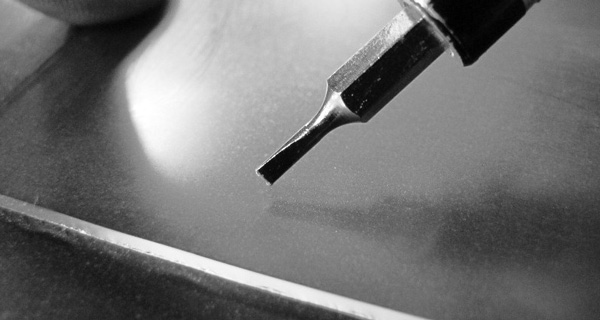
For comparison, this is how the coating, initially chosen, looked like after a strong impact on it with a screwdriver (the coating on the top image was subjected to exactly the same test)
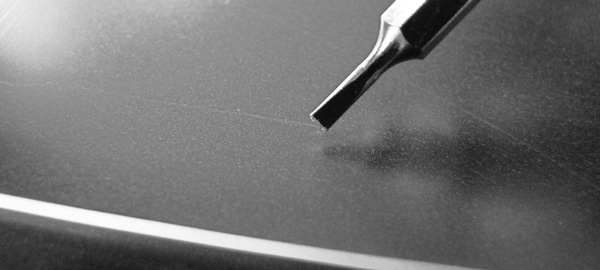
Secondly, the Adam screen is made using Pixel Qi technology (however, it is also expected to release a version with a regular screen at a lower price). The peculiarity of this technology lies in the possibility of working without backlighting in the “e-book” mode with an almost colorless screen, consuming an order of magnitude less energy, with illumination. In addition, it is this technology that allows the screen to remain in bright light (the iPad is turned on in this video, which can be seen from certain angles):
Thirdly, Adam is able to play FullHD video (the desync in the video is an artifact of the coding curve):
... and HD flash video (this is a prototype with another glossy screen):
Also, the company Notion Ink has made great efforts (and received 9 patents only in this area) in order to make the frame around the screen already. The result of this work was a frame width of 16mm - for comparison, the iPad has 22 millimeters of meaningless blackness around the screen.
Another area that has taken away a considerable number of man-hours for Notion Ink employees is fonts. Android was developed for phones that have, in general, a better DPI than tablets. The result of the direct transfer of Android to large tablet screens is the imperfect work of hinting and sub-pixel rendering errors in portrait mode (in which the pixels are physically rotated). Antialiasing helps, but it kills the clarity of the contours of the letters. Notion Ink spent a lot of time correcting this, and the result of this work will soon be available to everyone.
Battery life
Most of the current in Adam consumes the screen. It is followed by descending order: Wi-Fi, 3G, speakers (at maximum volume mode), and only then CPU / GPU. Such a distribution does honor to ARM and NVIDIA engineers - after all, this means that 3D games will not significantly reduce battery life. Also, obviously, turning off the backlight should significantly increase battery life. It is also necessary to note the unusually large share of column consumption - it becomes understandable if we take into account Rohan’s statements that the quality of Adam’s columns was one of the development priorities.
If we talk about specific numbers, then Rohan speaks of a real lifespan of 2 days to 15 hours with normal tablet use (what Apple calls “browsing”) and a minimum work time of 6 hours (1080p continuous playback at maximum brightness with output to speakers; continuous YouTubeHD playback over WiFi / 3G; HD video recording with simultaneous streaming via WiFi or 3G).
The battery in the Adam also performs the mass redistribution function.

The plate, the center of gravity of which is located closer to the arm, obviously seems lighter. In addition, this arrangement of the battery allows the use of more capacious standard "notebook" round "banks" - being located along the edge, they do not increase the thickness of the tablet.
UI Soft
Notion Ink is developing its own Androida shell using hardware acceleration to draw the interface. In addition, the UI being developed
Notion Ink, is really very different from the usual and found on other tablets or desktops.
The first would be worth mentioning the unique implementation of multitasking. At its center is the concept of "panels".
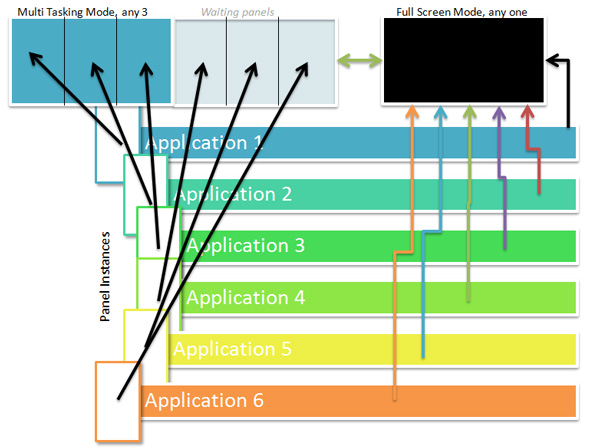
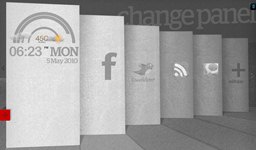
"Panels" are slots for running applications. 3 of them can be simultaneously displayed on the screen (and, of course, executed); 3 more are in standby mode and can be called at any time. Also, any application can be deployed in full screen. Software written by Notion Ink uses this to switch modes: for example, the mail client, working in the panel, provides only basic functionality; while being deployed in full screen, it turns into a full-featured application for working with mail. Another advantage of such an organization of the screen is that applications for mobile will not look too unpleasant on the big screen - the resolution of one panel is slightly different from the resolution of some mobile phones.
Some applications (such as the file manager) can be launched in several instances in different panels, which allows, for example, to work with several folders at once and transfer files with a simple movement of your finger:
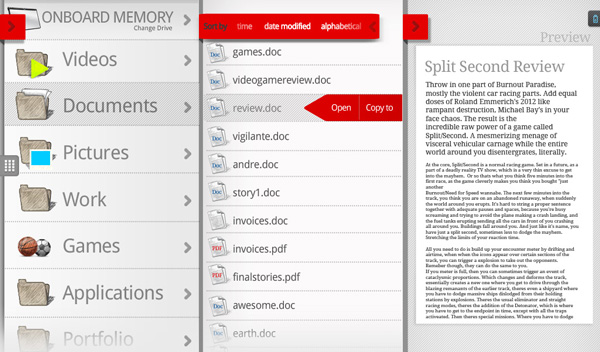
In the interface there is also a certain analogue of the tray. An application can notify about a certain event, like this twitter client, at the side of the screen:

... or provide some kind of interface in the form of a "fat" notice, like this player:
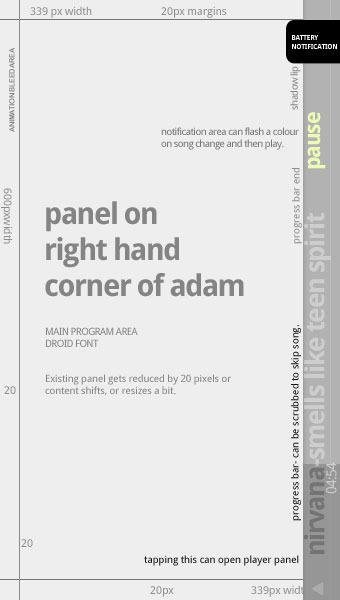
Of course, these screens are not a release version of the interface. Nevertheless, the unusual Adam interface is also noticeable against the already traditional “glass”, “water” and glare on them. Another example is the teaser of the application, which was the fruit of the collaboration of Notion Ink and the comic book distribution company LongBox:
Or a calendar combined with a task scheduler (Rohan claims that the entry “Meeting with Nikolas Tesla in Missouri on 10th July 1856: High Priority” is created in 6 tapov with your finger):

Finally, another Adam killer feature is support for Adobe Flash and AIR.
Prices
According to Rohan, the most expensive version (with a 3G and Pixel Qi screen) will cost about $ 500, which is, in general, a very impressive amount compared to other (especially Chinese) Android tablets. However, it seems to me that the price for this functionality is quite adequate, especially against the background of the Samsung Galaxy Tab and Apple iPad. The output of the tablet is scheduled for December 2010, that is, the wait is quite short.
Photo

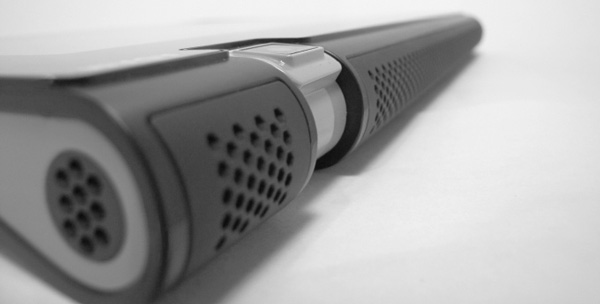

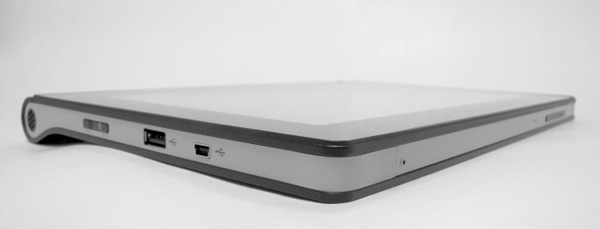

Source: https://habr.com/ru/post/109424/
All Articles